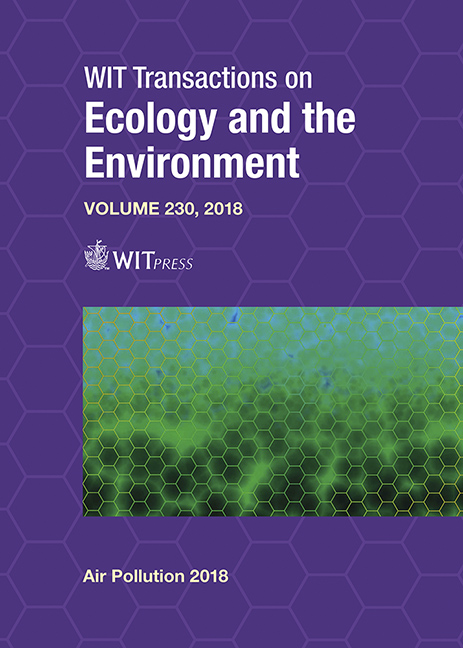SMALL AIR QUALITY SENSORS: IN VIVO TESTING OF ELECTROCHEMICAL CAIRPOL SENSORS IN COMPARISON TO REFERENCE MEASUREMENT
Price
Free (open access)
Transaction
Volume
230
Pages
12
Page Range
343 - 354
Published
2018
Paper DOI
10.2495/AIR180321
Copyright
WIT Press
Author(s)
PETRA BAUEROVÁ, ZBYNĚK NOVÁK, ŠTĚPÁN RYCHLÍK, JOSEF KEDER
Abstract
Use of small air quality sensors is very popular during last few years not only in research but also in public sector. From scientific point of view there are possibilities to cover larger area in air quality monitoring by adding small and easy affordable sensors into the reference measurement networks. Such an application of sensors can be very useful for identifying new hotspots or for development of finescale air quality modelling. Nevertheless, there are some limits for real-time outdoor monitoring that must be considered – higher detection limits and weak possibility to deal with non-standard conditions (low temperatures or high air humidity). Therefore, it is very important to be careful with data postprocessing and data interpretation to not get misleading air quality information. Despite a few independent studies and tests of different types of small sensors have been already done (by universities, companies and also by EU Reference Laboratories), the standardized procedure for testing and verifying the data quality has not yet been developed. Sharing the field-measurement experience with different sensors and the data correction methods is therefore crucial. Here we provide results from test measurement of set of electrochemical Cairclip sensors (Cairpol, FR) for SO2, NO2, O3/NO2 and CO during summer (in year 2015) and winter period (2017/2018). The best performance both in comparison between pairs and also between sensors and reference monitors (RM) was found out in combined O3/NO2 Cairclip sensor. Nevertheless, the association of sensor’s measured data with sum of O3 and NO2 measured by RM was much better in summer (R2 = 0.88) than in winter period (R2 = 0.31). Based on the known effect of air temperature and humidity on sensors data quality, we further applied some corrections based on dew point deficit (Td deficit). In this way verified data showed significant improvement in relationship with RM data (R2 = 0.88 with improved slope in summer and R2 = 0.58 in winter). Although the quality of sensor’s measurement can be influenced by many factors at once and further research is needed to resolve all uncertainties, the simple corrections based on the most critical meteorological factors can be very effective.
Keywords
air quality, low-cost sensors, ozone, winter, gases, interference





